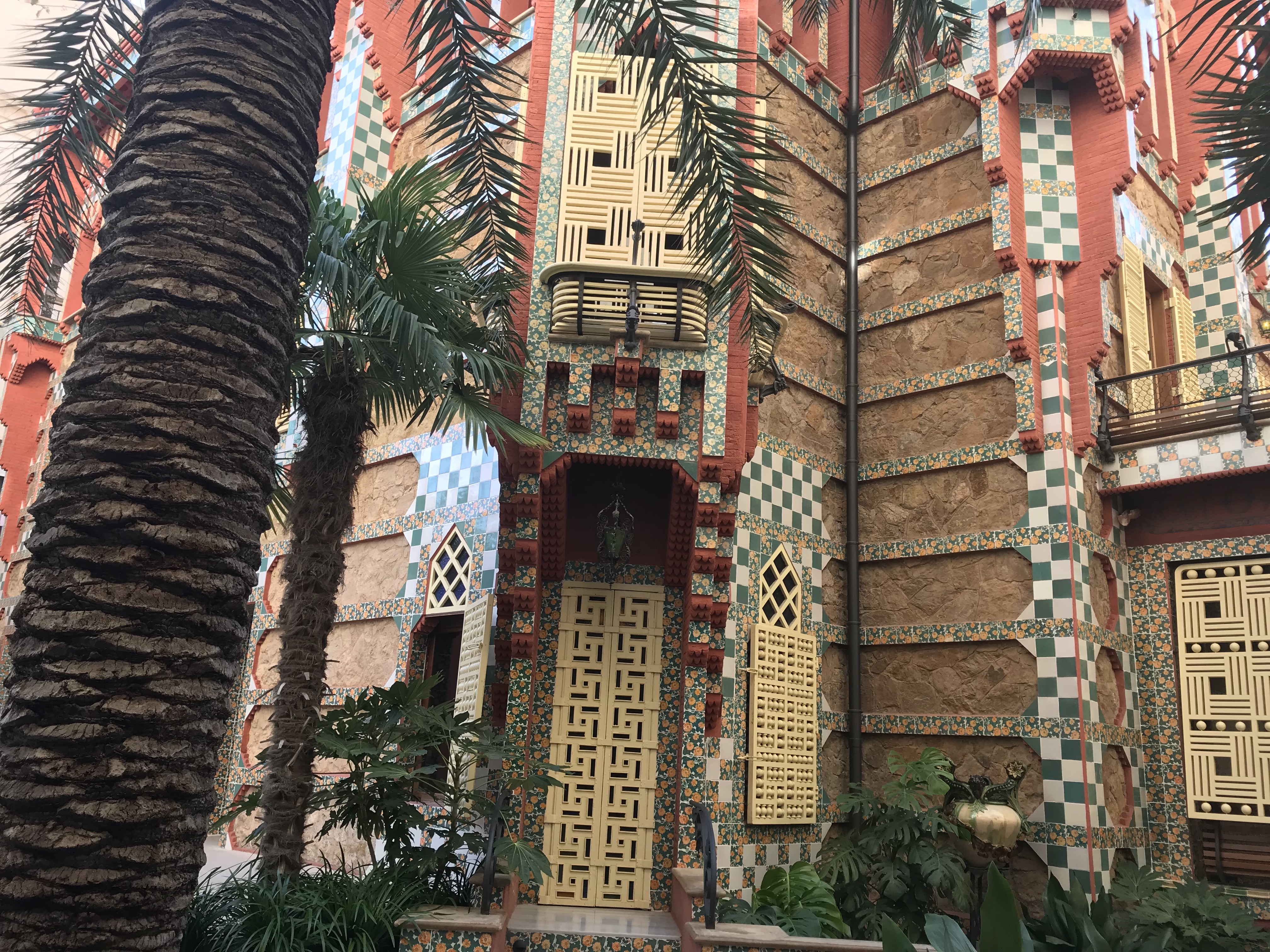Castells are an important aspect of Catalan culture. Castells, the Catalan word for castles, are intricate human towers built by large groups of Castellers. These multi-level human towers will amaze your whole family. Both children and adults will love this uniquely Catalonian tradition.
In this article, we will explore the world of Castells, so if you and the kids have a chance to see one of these human towers, you will understand and appreciate every detail!
For each successful castell, countless hours of rehearsal is required. However, the construction does not just require practice; it requires concentration, discipline, and meticulous technique. That’s why the Castellers moto is “Força, equilibri, valor i seny” (Catalan for strength, balance, courage, and judgment)
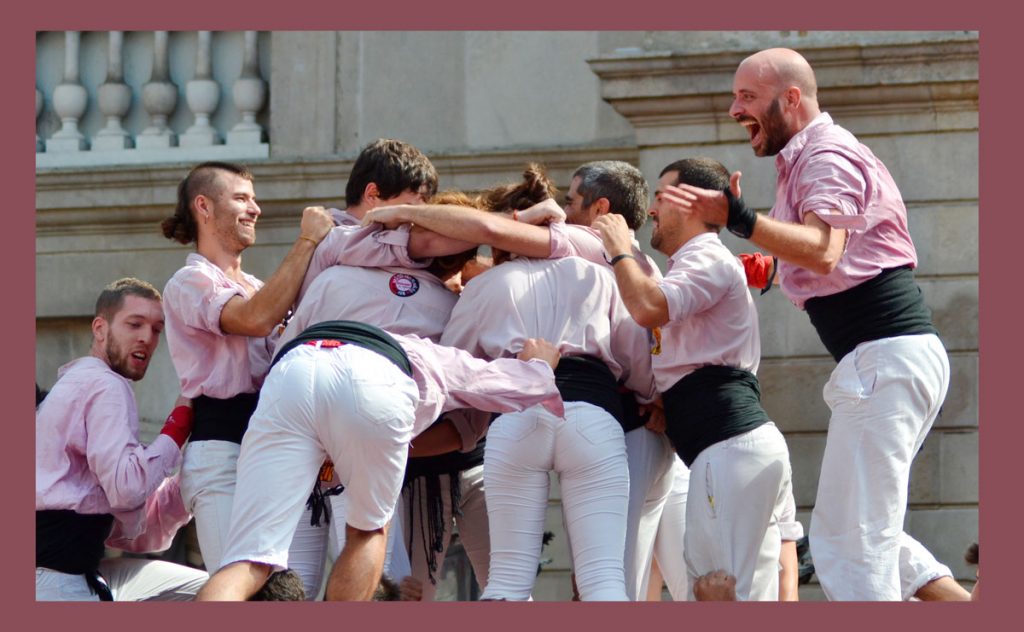
A Little Bit of History
The tradition of human towers in Catalunya can be traced back to the fifteenth century in the south of the Ebro Delta. Centuries ago, in this delta region on the Mediterranean sea, there was a traditional Valencian dance that ended with a small human tower. The dance later became popular in the Province of Tarragona. As time went on, the groups that performed this dance decided to forego the dance to focus on the human tower aspect of the performance.
At this point, rival groups of Castellers began to compete in human tower competitions. Each different group, or colles, tried to create the tallest and most original tower.
During Franco’s regime, Catalan culture was severely repressed. The state prohibited the use of the Catalan language and banned the majority of Catalan cultural symbols. In fact, castells were the only aspect of Catalan culture not restricted by the regime. Although human towers were never prohibited, after Franco’s death, when Spain transitioned to democracy, castells grew in popularity. The practice spread throughout Catalunya and Spain and began to be showcased in festivals.
Women in Castells
The incorporation of women into the castells discipline has been fundamental to its spectacular evolution. Initially, only men participated. But, in the 1980s women were included in the tradition for the first time, which launched the golden age of castells. Since women have joined the tradition, human towers are lighter and stronger, which has allowed Castellers to construct towers much taller than ever before. Now, Castellers can create towers up to ten stories high, which would not have been possible with a more substantial, male-only tower.
Castells are so fundamental to the Catalonian culture that in 2010, UNESCO recognized castells on a list of the Intangible Cultural Heritage of Humanity.
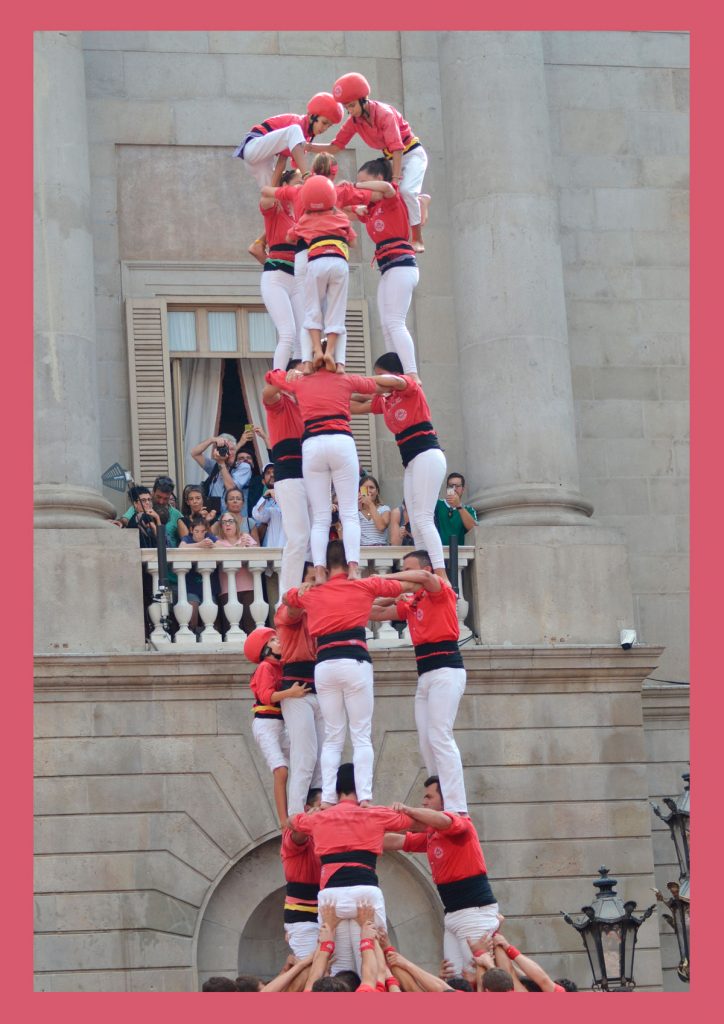
What are Castells?
Castells are human towers that reach six-to-ten stories high. The name of the tower is dependent upon its structure. For example, a six-story tower formed with three people on each level is called a “tres de sis” or three of six.
The base of the tower is made up of the strongest Castellers. Then, the lightest and most agile climb atop the base. Finally, at the very top of the tower are the kids.
The Composition of a Castell:
There are three parts to a castell:
- The pinya (pineapple) is the base of the tower. All the weight of the castell rests in the base. It also serves to cushion the landing of any possible fall.
- The tronc“(trunk) is the vertical structure of the tower. It connects the base and the top of the castell. This part of the tower can be made up of up to ten stories.
- The pom de dalt (tower dome) is made up of children. Children top the castell because their lightweight and agility allow them to climb up the base and trunk of the tower to reach the top.
Sometimes, additional support structures for tall castells are needed. The flore is a second base used to support the second story of a tall structure. This group stands on top of the base. The manilla is a third support structure that goes on top of the folre. Then, the trunk goes on top of the manilla and of course, the pom de dalt is at the very top.
Creating a castell requires precise technique and concentration. The head of the group called the cap de colla instructs all the Castellers and assigns everyone a specific position in the structure. The group leader’s main job is to create the structure of the castell successfully.

Kids in Castells?
Castells require teamwork. Every person involved is essential, but the children are the stars of the show. They are the ones that climb the highest and finish the creation.
Although the children wear helmets and mouth gear, as parents, it’s hard to see them climb so high. Naturally, it makes us nervous. However, it is important to understand that a castellera colla is like one big family; it is made up of parents, aunts, uncles, and kids. The kids rehearse for many hours and are prepared physically. They are also mentally and psychologically prepared.
The “Enxaneta”
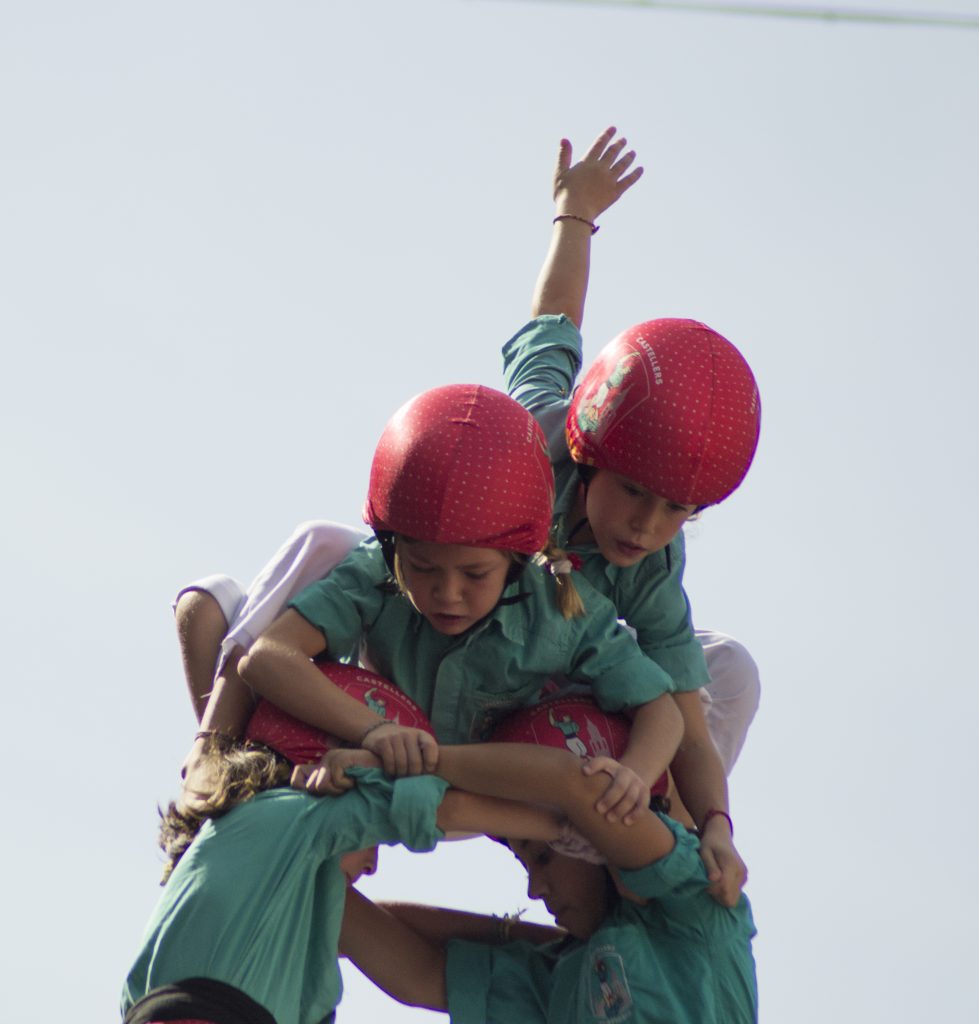
The enxaneta is the child at the very top of the castell. This child piggybacks on the aixecador (the lifter), who is usually the smallest child in the structure. When the enxaneta climbs on the aixecador they make the final pose by putting one arm up, which is known as crowning the castle. After that, all they have to do is climb down without the whole castell falling.

Music and Clothing
The Gralla and Drum
Castellers are accompanied by musicians who play two instruments: a wind instrument called la Gralla and a drum. While the members of the group build the castell, the melodies change.
So, when the colla arrives at the square, one melody is played. Then, as the castell begins construction, the musicians play a different tune. And, when the child climbs to the top and crowns the castell, the music is sharp and fast-paced. The final melody marks the descent of the Castellers. These different tunes tell the Castellers what part of the construction is taking place. So, the Castellers at the base of the castell, who can’t look up to visualize the process, know what part they are at and how much longer the construction will take.
Additionally, the music adds an emotional component to the construction of the castell.
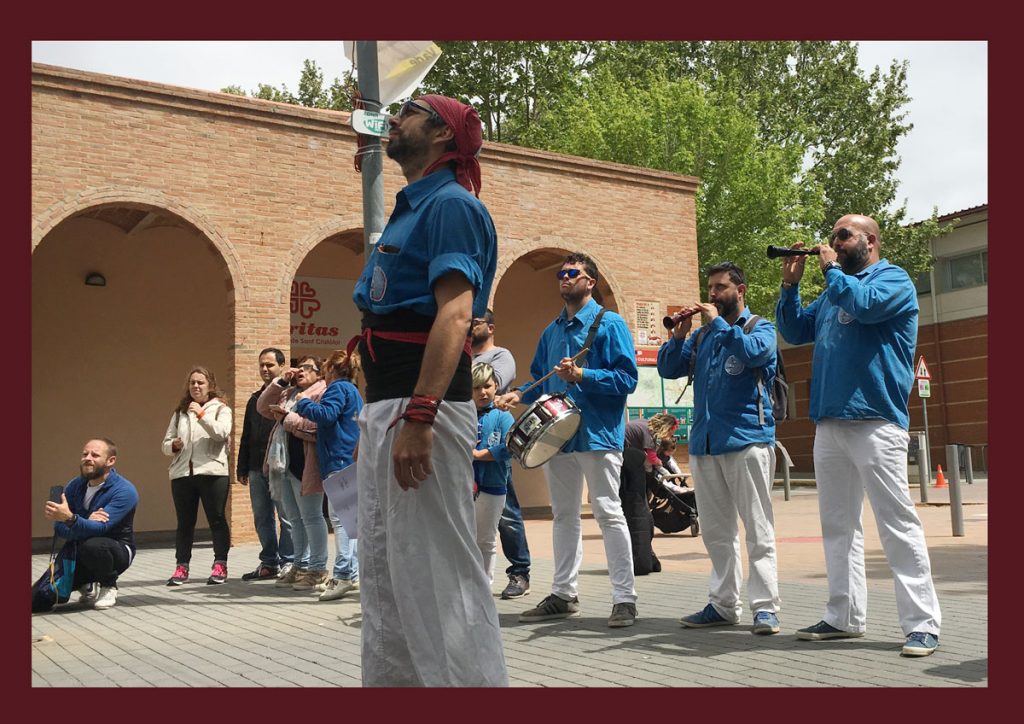
Castellers‘ clothing is very particular. Each castellera colla has a different colored shirt. So, when competitions take place, it is clear who is part of each group. However, apart from shirt color, all of the colles have the same uniform. They wear white pants, a belt called faixa, and matching shirts. The individuals who climb are barefoot, and the children always wear helmets.
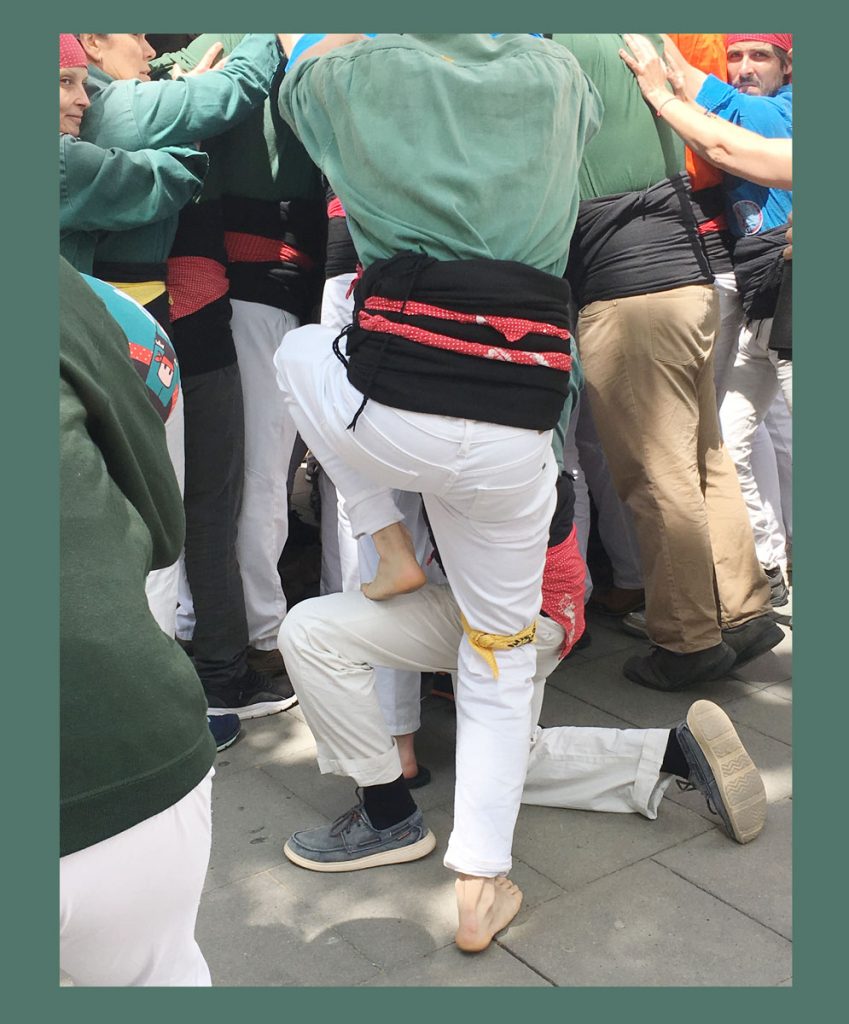
Where Can You See the Castells?
The castellera season begins in May and ends in October. So, if you are hoping to witness this Catalan tradition, spring and summer is the best time of the year. During these months, Castellers perform at all the main festivals in large town squares.
Castell Competition in Tarragona
Every other year, since 1980, a castell competition is held in Tarragona. It is considered the largest castell showcase in the world. All the main colles compete in this competition, such as Colla Vella dels Xiquets de Valls, Castellers de Vilafranca, Colla Jove Xiquets de Tarragona, and Minyons de Terrassa.
At the last competition, spectators witnessed over 13 giant castells.
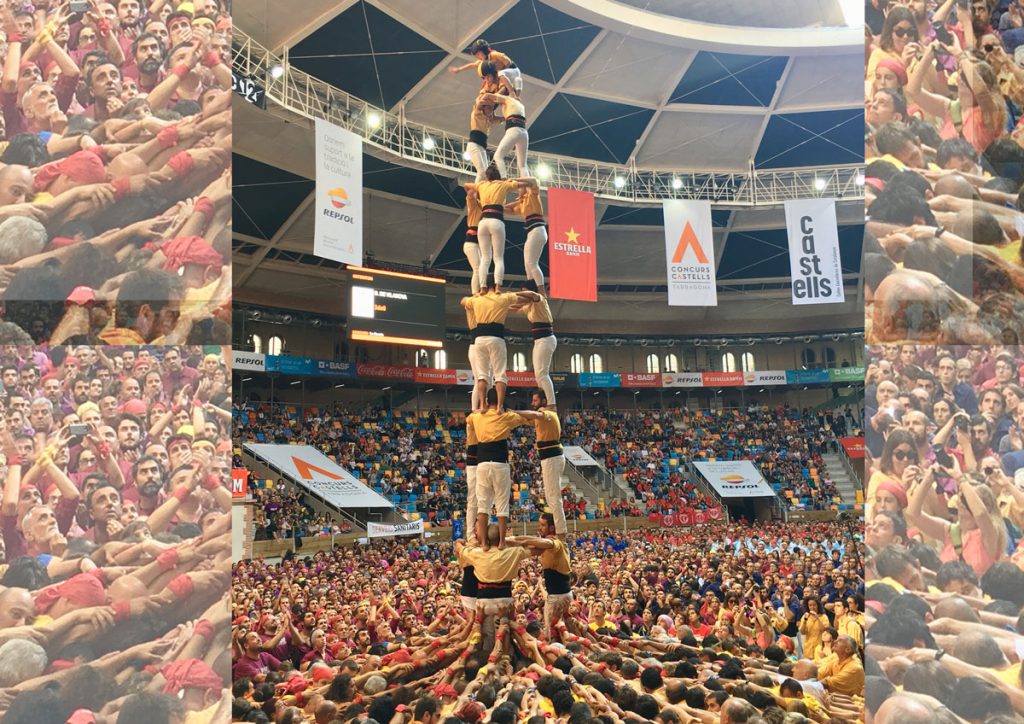
Are you interested in joining the colla? It would undoubtedly be an unforgettable experience for both the adults and children of the family. Book our experience to get to know the Sants district of Barcelona and become a Casteller for the day!
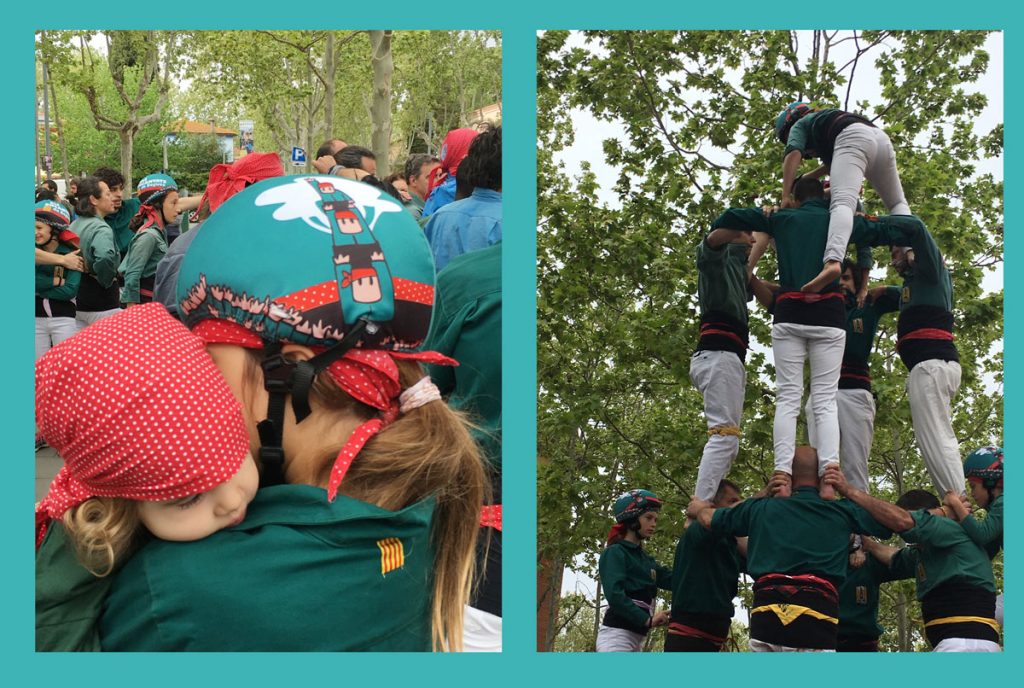
To understand this unique symbol of Catalan culture, you have to see tradition up close. It is difficult to explain how truly emotional the experience is. There is no better way than to experience the tradition first hand!
Are you ready to get goosebumps?


